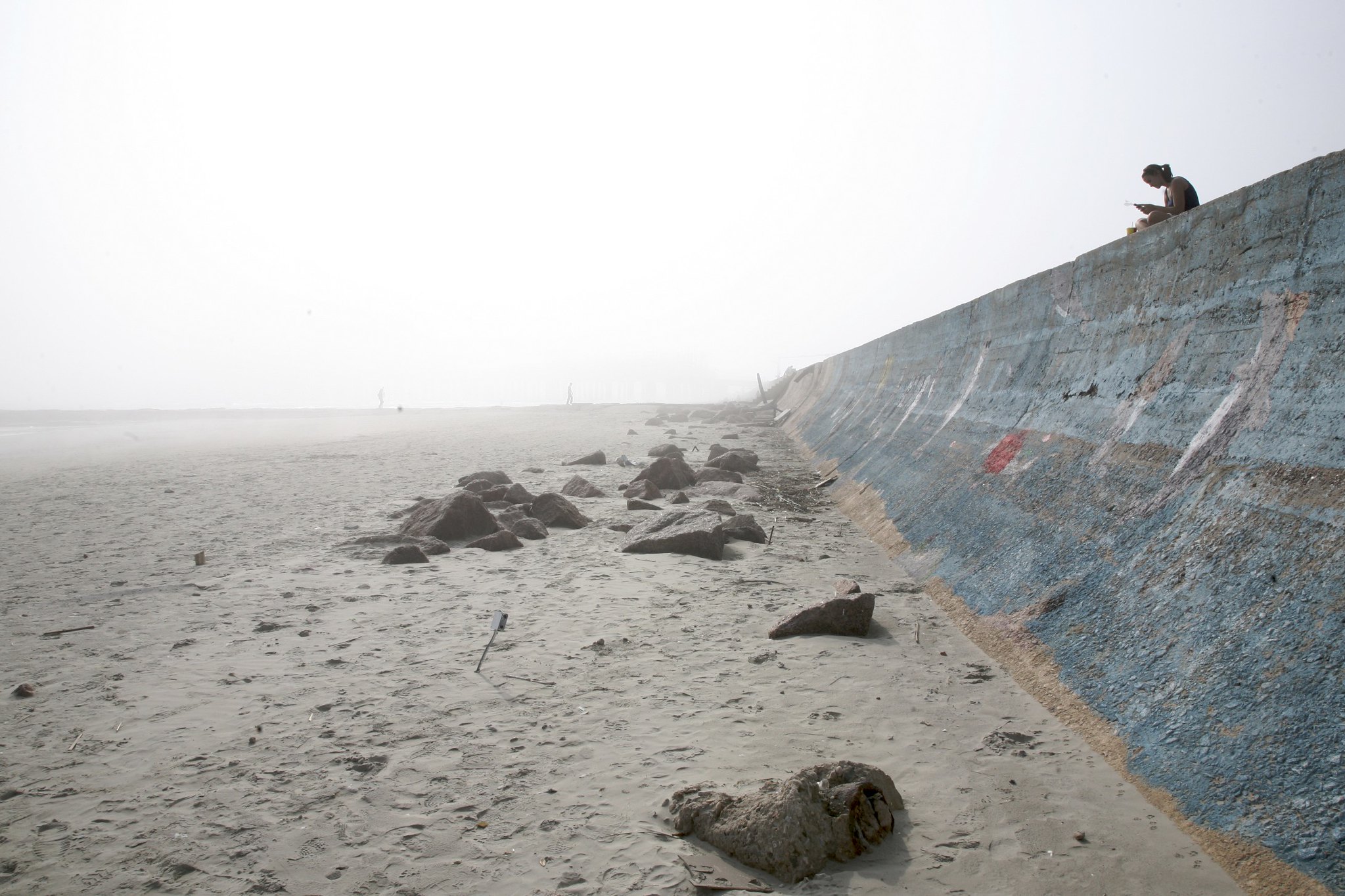This roughly 30-mile-long barrier island, an hour’s drive from Houston, is a powerful testament to humans staring down nature and refusing to yield.
Devastated by an extreme hurricane in 1900, Galvestonians built a 17-foot-high sea wall and pumped in millions of cubic yards of sand to lift neighborhoods.
“Galveston has literally raised herself above sea level and today proudly surveys the results of her achievements,” a 1930 Galveston Daily News article noted.
Today, the island is booming. Galveston’s population has grown, home sale prices have more than doubled since 2011 and developers see more potential — even beyond the island’s existing fortifications.
The sea wall protects only about a third of the island. Where it ends, two luxury condominium projects have been proposed along one of the fastest-eroding stretches of beach.
At the same time, here as across much of the South, the threat from the sea is intensifying.
Since 2010, Galveston has experienced a burst of sea level rise, which has added a staggering 8 inches to the ocean’s height here, according to federal data analyzed by The Washington Post — one of the most rapid changes across the Gulf of Mexico. The rise is being exacerbated by fast-sinking land, which is taking the island and all that’s on it ever lower.
The collision between the rising ocean and Americans’ desire to live near it is playing out from Texas to Florida to the Carolinas. Coastal communities throughout the American South have grown to accommodate an influx of residents, even as the region grapples with some of the planet’s fastest-rising seas — as well as the likelihood of stronger storms and more intense rains fueled by a warming atmosphere.
The tensions over how to adapt to those changes, and where to build and rebuild, may be entering a new, more fraught chapter.
As waters rise, experts say, developments along low-lying coastlines are likely to require more frequent and costly protections. Without them, homes and other buildings could be threatened as rising groundwater attacks foundations, as erosion brings the sea closer and closer, and as persistent flooding complicates daily life.
“All of these individual developments, they come with obligations and commitments that are beyond that particular property and the people who own it,” said Randall Parkinson, a Florida International University professor and coastal geologist.
Governments are typically on the hook for maintaining roads, re-nourishing beaches and keeping utilities up and running. “That comes from the coffers of taxpayers,” he said. “That’s other people’s money.”
Still, here and in other coastal communities, people keep arriving.
Galveston’s population has swelled by nearly 12 percent since 2010, according to figures from the Census Bureau. And U.S. coastal counties, already home to almost 40 percent of the nation’s population, are expected to see millions more arrive in coming years, according to the National Oceanic and Atmospheric Administration.
“It really does, on the surface, seem like a paradox,” said Martin Smith, an environmental economist at Duke University. But the allure of living near the water remains strong, he said, and demand for coastal housing remains “astronomically” high.
“This process is unfolding all throughout the Southeast and the Gulf Coast,” Smith said.
Even so, this summer has underscored the risks.
In June, high seas caused by Tropical Storm Alberto surged through Galveston, flooding streets and eating away at some dunes. In early July, Hurricane Beryl raked the island with violent winds and storm surge. Some areas saw significant flooding. Torrential rains later in the month left some roads temporarily impassable.
Unlike many flood-plagued communities, Galveston awaits a possible salvation — the largest authorized project in the history of the U.S. Army Corps of Engineers, which currently is projected to cost $57 billion over time and take two decades to construct.
Popularly known as the Ike Dike, its core purpose is to defend the broader Houston region, but much of that strategy hinges on fortifying Galveston Island. The project would raise the island’s sea wall and build a barrier of levees and flood walls around its denser urban core. It would also construct 18 miles of double dunes beyond where the sea wall ends, giving back much of what the ocean has taken over the past century.
In the meantime, Galveston is taking steps to battle sea level rise. The city is planning to install a half-dozen or more large pump stations to help ease worsening tidal floods that can leave residents unable to access their homes or businesses for hours at a time. The first is expected to cost about $60 million, a significant chunk of which would come from federal grants.
“We’re in the crosshairs here,” Mayor Craig Brown said in an interview. He said the pumps are one way the city is trying to be proactive.
“It’s part of our survival here in Galveston,” he said…

